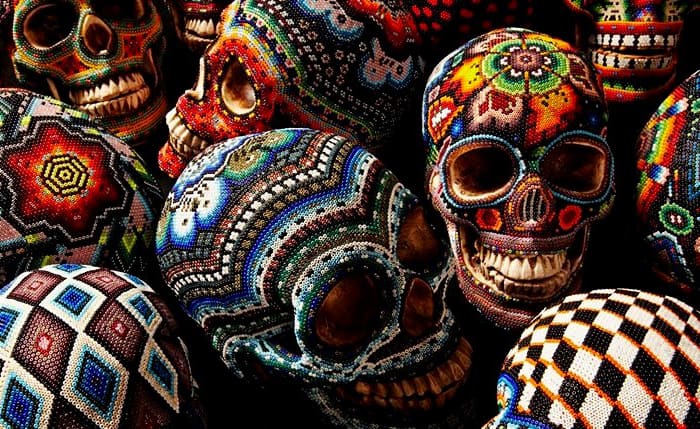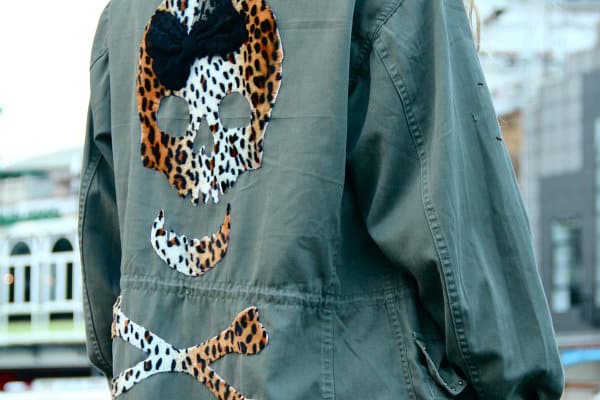Skulls are everywhere in fashion. They are not just a Halloween costume or a punk rock accessory. As a timeless and universal symbol, they have been shaping fashion trends for centuries. Whether they are printed on a T-shirt, carved on a ring, or inked on a body, skulls have a way of expressing something about our beliefs, emotions, and identities.
But where did this fascination with skulls come from? How did they become such a staple of fashion? If you, too, are passionate about skulls, join us as we take a journey through the history of skulls in fashion, from their ancient origins to modern interpretations. The skull as a fashion element didn’t just magically appear in the 20th century. It has come a long way from its humble beginning rooted in superstitions, through a widespread motif in European art, to a modern-day emblem of rebellion.
Ancient Roots: Symbolism and Significance
Skulls have been part of fashion for a long time. In fact, some of the oldest civilizations in the world used skulls in their adornments and accessories. But they weren’t just ‘beautiful things’ performing the function of embellishment. On the contrary, they were incorporated into fashion as powerful symbols with a wide spectrum of meanings.
The ancient Egyptians were captivated by the skulls. They saw them as a representation of the link between life and death, as well as the divine power that governed both. They didn’t wear actual skulls, but they used skull imagery in their jewelry and decorative arts. The magnificent pieces crafted from gold and gemstones and intended for those clothed in authority, featured intricate designs and symbols primarily associated with deities. The skull, in particular, was closely linked to the god Osiris, who was killed and resurrected by his wife Isis. It was esteemed as a representation of his power over life and death, as well as his wisdom and knowledge.
The ancient Mexicans, such as the Aztecs and Maya, had a different approach to skulls. They incorporated real skulls in their fashion and adornments, but not in a morbid or gruesome way. Instead, they used them in ceremonies and rituals to honor their ancestors and their connection to the spiritual realm. They created stunning skull masks, headdresses, and ornaments, where alongside bones, they utilized materials such as jade, obsidian, and precious metals. These pieces were decorated with carvings and paints, reflecting the artistic skills and cultural values of the people. Worn during religious ceremonies, dances, and festivities, they symbolized respect and gratitude for the life-giving forces of nature and the afterlife. Today, the skull didn’t lose its ceremonial significance. The so-called sugar skulls, whether they are sweets, accessories, or even make-up style, are an essential component of the Mexican festival Day of the Dead.
In ancient China, the application of skulls in fashion is less evident. The Chinese didn’t use skulls as much as other cultures did, but they still recognized the significance of this symbol. They saw it as a protective talisman or amulet, which could bring good luck, ward off evil spirits, or invoke positive energies. Presumably, they incorporated skulls into their jewelry and accessories along with other symbolic elements made from precious stones, metals, and silk.
Skulls in the Middle Ages
Flash forward to the Middle Ages, when skulls became a prominent symbol in European culture. The main force behind its popularity was Christianity and the idea of memento mori.
The skull had a special significance in Christian art and iconography, especially in relation to the crucifixion of Jesus Christ. The skull represented the place where Adam, the first man, was buried, according to Christian tradition. This association conveyed the sinfulness and mortality of humanity. Skulls were often shown at the foot of the cross or as part of the artwork depicting the crucifixion scene. These skulls served as reminders of the fleeting nature of life and the ultimate hope for salvation.
When it comes to temporal matters, the Middle Ages gave prominence to the Latin phrase “memento mori”, meaning “remember death” or “remember that you must die.” Widely used in art, literature, and fashion, the memento mori theme revolved around the common symbols of death. Skulls, along with hourglasses, skeletons, and wilting flowers, embellished all possible forms of adornment. They were meant to inspire people to reflect on their lives, focus on their spiritual well-being, and pursue a virtuous existence.
Vanitas Art and the Renaissance
From applied art to fine art, the skull kept up the momentum during the Renaissance. One of the most significant forms skulls have taken back then was vanitas. Vanitas paintings were a type of art that featured symbolic objects to show the fleeting and vain nature of earthly life. Skulls, as powerful reminders of the certainty of death, fit the bill perfectly. These paintings showed skulls along with other symbolic elements such as extinguished candles, withered flowers, and decaying fruits, all evoking associations with mortality. All these motifs were supposed to make people think about the shortness of life and the importance of spiritual reflection over worldly pursuits.
But Renaissance skulls weren’t all about gloom and doom. It may seem shocking, but they also had a sentimental significance in certain parts of Europe, especially in Germany and Austria. Following the tradition of memento mori jewelry, skull rings and pendants cemented their role as symbols of memory, loyalty, and love. These pieces often had engraved initials or names of dead or living loved ones. This emotion-inducing gift was exchanged between friends, lovers, or family members, expressing the bond and cherished memories they shared. It was a way to keep the memory of loved ones close and pay tribute to their lives.
Emergence in Modern Fashion
The skull symbol has come a long way since its ancient origins. It has been used across various cultures and eras to express a gamut of meanings and values. But how did it become such a staple of modern fashion?
Well, the symbol burst into the fashion scene in the 1970s, when the punk rock movement took the world by storm. Punks adopted the skull as a powerful emblem of rebellion, nonconformity, and anti-establishment ideals. They rocked skulls on their logos, album covers, and stage props, creating a bold and defiant image. Skulls became fashionable means to make a statement whether they were emblazoned on leather jackets, spiked accessories, or body piercings. While the symbol stood for resistance and rejection of mainstream norms, it also encapsulated the DIY culture of individualism and creative expression.
In the following decades, the skull symbolism spread to other music genres including heavy metal and goth rock. Embraced by heavy metal bands like Iron Maiden, Slayer, and Metallica, it served to invoke themes of death, violence, and horror that matched their aesthetics and lyrics. Music acts didn’t shy away from displaying the symbol left, right, and center, including their album artwork and merchandise.
Goth bands followed suit, although in a slightly different way. To them, skulls were an expression of their fascination with the macabre, romantic, and supernatural. Bands like Bauhaus, Siouxsie and the Banshees, The Cure and others wove skulls into their visuals and lyrics, creating a mood of melancholy and mystery. In goth fashion, skulls adjoined lace, velvet, gems, leather, crosses, and roses, helping to create an eclectic dark aesthetic called for finding beauty in decay.
Over time, the skull symbol has transcended specific subcultures and become intertwined with various fashion trends. It has found a place in rock and roll aesthetics, biker community, streetwear, and grunge, each time representing different meanings for different wearers. Some people associate the skull with strength, courage, and defiance, while others view it as a symbol of individuality, creativity, and freedom. For some, it even serves as a playful and ironic statement, injecting a touch of humor into their style. Whenever significance you wish the skull to convey, it will deliver. Make sure to peek at various skull aesthetics at https://www.bikerringshop.com/collections/skull-jewelry.
Skull Symbol in Contemporary Fashion and Design
Today, the skull symbol remains a prominent and enduring force in fashion. It is no longer reserved for niche, underground enthusiasts. On the contrary, more and more mainstream fashion houses and high-end designers incorporate skulls into their collections.
Alexander McQueen became a pioneer of the highstreet skull trend. Known for his avant-garde designs, McQueen introduced the iconic motif in his signature scarves and clutches, merging dark elegance with edgy sophistication. Vivienne Westwood, a veteran of punk fashion, keeps infusing skull imagery into her jewelry and accessories, thus adding a touch of rebellious charm to her creations. Philipp Plein, recognized for his bold glamorous aesthetic, celebrates the prominence of the skull with his unique clothing and shoe collections. Pairing skulls with crystals and a hefty dose of glint, he promotes luxury with an edgy sensibility.
Celebrities and influencers didn’t overlook the skull either. They gravitate toward this multi-faceted symbol as a means of personal expression. Just look at some stars who embed skulls into their individuality – https://www.contactmusic.com/news/celebrities-who-adore-good-old-skull-jewelry_6283470. Thanks to its undeniable universal appeal, it contributes to their never-ending attempts to communicate their unique style and attitude. The symbol’s enduring popularity underscores its ability to captivate and resonate with diverse audiences across cultures and generations.
The Ever-Evolving Symbolism of the Skull
As fashion continues to evolve, so too does the skull. Its future is unknown but is certainly exciting. Masterfully adopting endless possibilities and reinterpretations, it may take on new forms, blend with other motifs, or undergo innovative transformations. The skull’s symbolism will continue to adapt and reflect the shifting cultural landscape. One thing is for sure: it will continue challenging conventions, redefining traditional meanings, or upholding timeless values.
The skull’s longevity and resilience lie in its ability to provoke emotions and stimulate introspection. It encompasses a wide range of interpretations, from fear and fascination to admiration and contemplation. Doubling down as inspiration for designers, artists, and fashion enthusiasts, it is a renowned conduit for creativity and exploration of life’s profound mysteries.
The skull symbol transcends the boundaries of cultures and eras. Its widespread reach is a testament to its allure and impact on the world of fashion. From ancient civilizations to contemporary runways, the skull found itself embodying a myriad of meanings and associations. Its ability to evoke both darkness and beauty, mortality and resilience, makes it an emblematic motif bound to captivate generations to come.
Presented by: Ascend Agency





